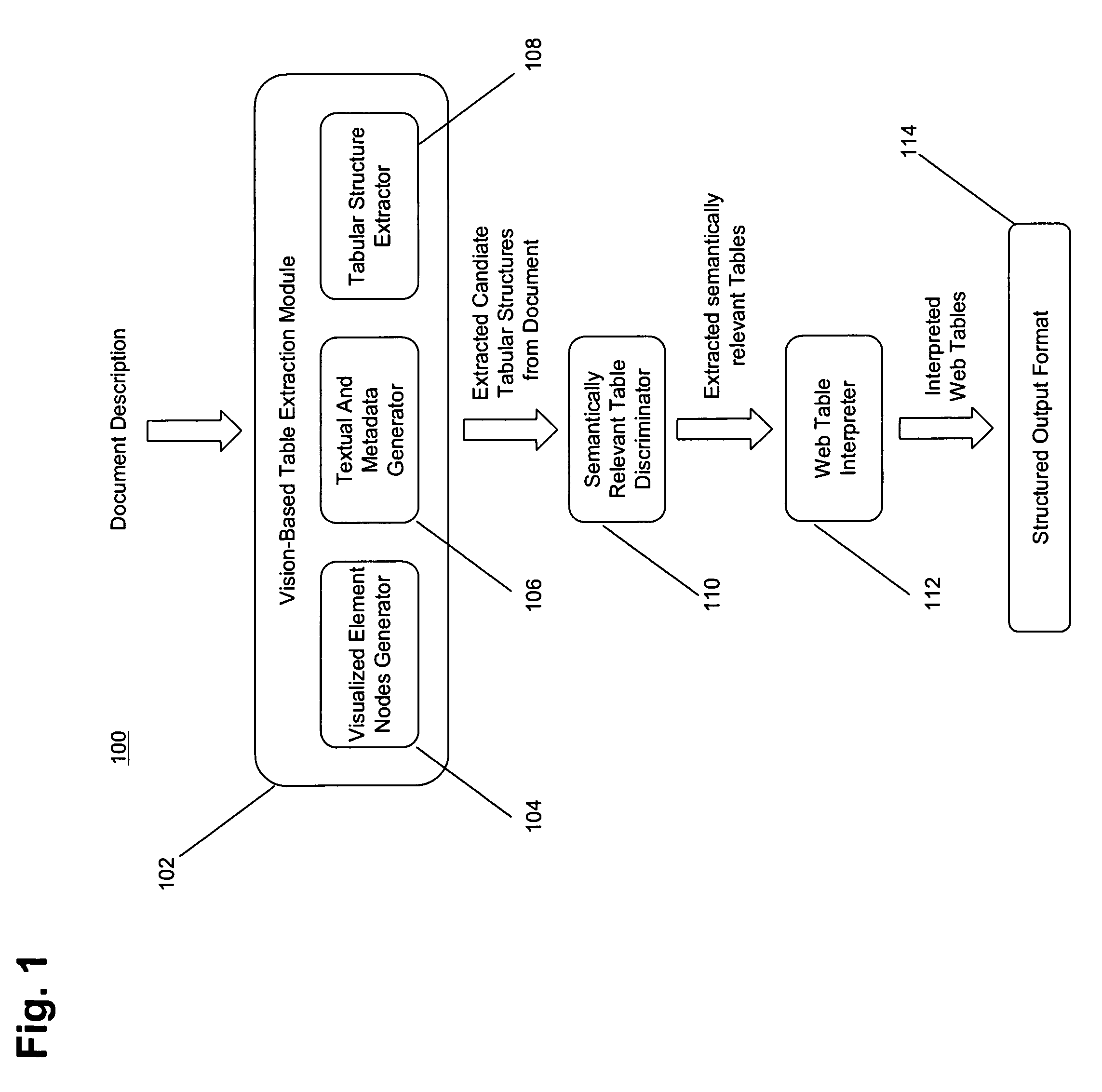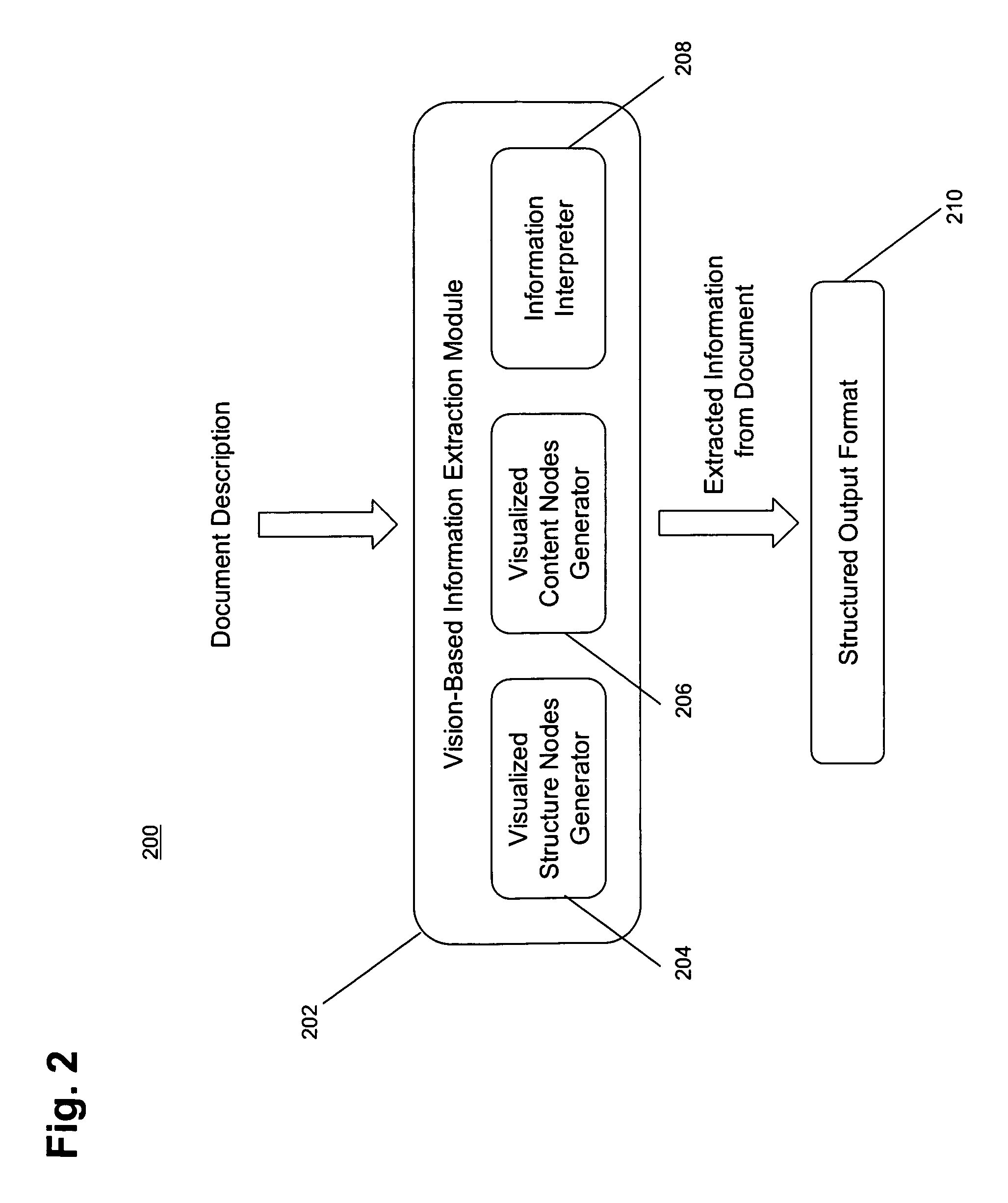Information extraction using spatial reasoning on the CSS2 visual box model
a spatial reasoning and information extraction technology, applied in the field of information extraction using spatial reasoning on the css2 visual box model, can solve the problems of difficult to develop accurate and exhaustive rules to detect arbitrary web tables reliably, the positional coordinates of individual boxes in the visual representation of the document are not deterministic and uniquely defined, and the task of automatically extracting such information from web pages is difficul
- Summary
- Abstract
- Description
- Claims
- Application Information
AI Technical Summary
Benefits of technology
Problems solved by technology
Method used
Image
Examples
Embodiment Construction
[0039]We provide a method to recognize tables on web pages similar to the way human observers do, by looking at the visual representation.
[0040]In [Gatterbauer and Bohunsky, 2006], we describe a method for table extraction that works on both word and element node bounding boxes, which is the basis for this RPA. In [Gatterbauer et al, 2007] we provide more examples and give a formalization of some embodiments of the method.
[0041]In contrast to other approaches, we base our information extraction on positional information that is independent of the HTML tag structure and do not rely on particular HTML structures being present. Our approach does not attempt to find individual text fields, but rather, larger structures, does not require training sets and neither imposes a hierarchical tree structure on the overall web page.
[0042]A web table is a two-dimensional presentation of logical relations between groups of data items. Those relations are reflected by different visual properties an...
PUM
 Login to View More
Login to View More Abstract
Description
Claims
Application Information
 Login to View More
Login to View More - R&D
- Intellectual Property
- Life Sciences
- Materials
- Tech Scout
- Unparalleled Data Quality
- Higher Quality Content
- 60% Fewer Hallucinations
Browse by: Latest US Patents, China's latest patents, Technical Efficacy Thesaurus, Application Domain, Technology Topic, Popular Technical Reports.
© 2025 PatSnap. All rights reserved.Legal|Privacy policy|Modern Slavery Act Transparency Statement|Sitemap|About US| Contact US: help@patsnap.com



